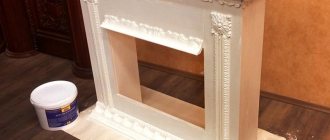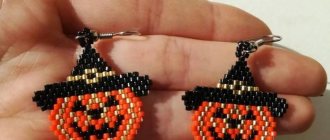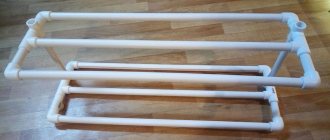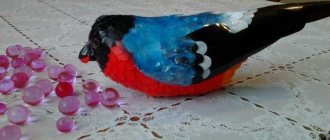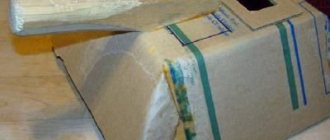Dangerous field mouse at home
Although the field mouse is indeed small, it can turn out that the damage it deals is really great. And the point here is not that he feeds on reserves and destroys them, leaving his excrement on them.
It is worth knowing that field mice are often carriers of serious diseases (for example, brucellosis). In addition, rodents in the home can lead to very serious problems.
Mice often make holes by gnawing holes. This means that the building's timber structures are at risk. In addition, they often make holes in the facade, insulation and similar places. Mice have very sharp teeth, so it can make a very deep hole in an instant.
In addition, the smell of these animals is truly repulsive. Therefore, you should protect your home, basement or attic from visiting these aggressors at all costs. In addition, if a situation arises that a mouse has settled in the house, you must immediately begin to fight it.
Harm from mice
These pests need to be controlled for several reasons. Firstly, many people are afraid of mice, especially housewives. When mice appear, they panic. In addition, there are a number of factors that are decisive. For example:
- Damage to household items. They were called rodents for good reason, since they are capable of chewing objects in the house, regardless of the material they are made of. This could be furniture, electrical wires, children's toys, shoes, etc. They especially love foam. If someone has made a renovation and used polystyrene foam as insulation, then you need to be prepared to receive such pests.
- Possibility of fire. Mice can easily eat the insulation of electrical wires, which can ultimately lead to a short circuit and fire. They can chew the power wires of many electrical appliances, so you need to regularly inspect them to ensure the integrity of the insulation.
- Presence of pathogenic microorganisms. The saliva of rodents can contain various microorganisms that can cause typhoid, cholera, plague or ordinary poisoning. In addition, mice are carriers of fleas, which prefer to feed on human blood.
- Rodents spoil food and water. This happens because mice everywhere leave traces of their vital activity in the form of feces, which are saturated with bacteria and viruses. If an animal drinks water from a cup, it can be hazardous to health.
- Mice leave behind an unpleasant odor. This is a kind of “mouse” smell, which is distinguished by its peculiarity. It is by this that you can determine that there are mice in the house. If it gets absorbed into furniture or some things, it is quite difficult to get rid of it. Some people may experience allergy attacks, which are expressed in the form of vomiting. In any case, this leads to constant discomfort.
Therefore, we can safely say that rodents cause significant harm, depriving a person of peace and comfort.
Mechanical mousetrap
The most popular rodent control method that has been used for many years is traditional mouse traps. Typically this is a mousetrap made of wood with a spring installed and a hook for bait.
Metal and plastic traps are also now available. When the mouse tries to eat the bait, the trap snaps shut, killing the pest on the spot.
To ensure that a mouse or rat is caught in a trap, you must use the right bait. It could be a piece of bread spread with fat, a piece of cheese, smoked meat or even chocolate. It is also important to monitor rodents and place a trap in their habitat.
But you need to understand that such a trap can be dangerous, especially for pets such as dogs and cats, as well as for small children. This also applies to an electric mousetrap assembled with your own hands.
Mousetrap or cat
Cats are often cited as the best remedy for mice. However, this is not true. Firstly, as practice shows, the smell of a cat is not a factor for mice that forces them to immediately leave the place where such a mark is present. Secondly, the cat hunts mice only when it is hungry, and, having eaten, stops hunting. There is no strict scientific data on how many mice a cat catches. The only statistically reliable can be considered the recorded count of mice caught by the Scottish cat Towser over the course of twenty-one years. Their number was 28,899 rodents, but if we consider the day, then this is only 4 mice during the cat’s waking period.
The famous Austrian ethologist Konrad Lorenz cites an interesting case in his books. The mousetrap, made from a handy object such as a bucket, caught about two dozen mice overnight. A cat was thrown among the rodents. The pet quickly strangled 4 mice, grabbed one of the victims in its teeth and jumped out of the bucket. Having eaten the prey, the cat did not return to the trap, but calmly went home.
Unlike a live mouse trap, properly made traps are more effective and permanently control rodents.
Why make a mousetrap?
Instead of buying typical wooden mousetraps, you can make your own mousetrap. In addition, it will be humane - one that will not harm the rodent. The caught mouse can simply be taken to the forest or to the lake.
This article will talk about how to make a mousetrap at home and what other ways there are to catch harmful rodents.
Electronic mousetrap
This type of mousetrap can be made by anyone with minimal knowledge of electrical engineering. There are 2 types of such mousetraps.
- Mousetrap cage. After a rodent, attracted by the smell of the bait, enters the cage, the trap door slams shut, the contacts located on the wall and the door are connected - the electrical circuit is closed and a signal sounds that the trap has worked.
- Killer mousetraps. In such devices, current is supplied to a metal plate installed at the bottom of the trap, as well as to the parts on which the bait is attached, or to parts that are placed on the path to the bait and which will definitely be touched by the animal making its way to the prey. The current passing through the body of the rodent that has closed the circuit kills it.
Mouse trap
A mousetrap is an excellent solution for rodent control. This is a very simple metal structure equipped with springs and a latch. When an animal lured by cheese or meat enters and moves the element on which the bait is located, a snap occurs inside. The mouse will not be harmed, so it can be taken to a safe place. Many DIY mouse traps are also very humane. But not all.
Note!
- DIY birdhouse: step-by-step diagrams and drawings for making it yourself. Types of birdhouses and materials + design ideas
- Do-it-yourself landscape design: planning and zoning of the site, selection of decorative elements. New products and design ideas (photo + video)
- Do-it-yourself sliding gates at the dacha: options for construction materials, preparation of the territory + step-by-step instructions for doing it yourself
The mouse trap can be double-sided or single-sided. This means that it can have one or two inputs. The design works great not only on mice, it can also be suitable for catching larger pests, such as rats or even martens.
How to install such a mousetrap? You need to find a place near the hole (it can be calculated by the excrement nearby). The clamp should be located approximately 1 meter from the hole.
If you need to catch mice, for example, in a garage or in outbuildings, then you should find a place through which rodents most often walk. The most effective bait is aromatic meat - bacon or a piece of sausage. They will tempt rodents much faster than yellow cheese.
If there is no such trap, then you can make mousetraps with your own hands. The options proposed below are the simplest and most effective.
How to catch a mouse
To check whether there really are mice in the house, you just need to sprinkle a little flour in the “suspicious” areas where the animals supposedly live, and see if traces appear the next morning. Depending on your personal preferences, you can choose different methods of catching mice - from harmless to quite cruel. It should be kept in mind that these rodents rarely leave their nests during the day, so you need to set traps at night.
A mouse is dangerous to humans because it can cause a dangerous infection, especially if it gets into food
Killer Mousetrap
An old, tried and true, but not always effective way to catch a mouse is to use a mousetrap. The latter can be industrially manufactured and vary in design. The principle of operation of such a device is to lure a rodent and then kill or injure it through a special mechanism.
Table: traps that kill rodents
| Traps made of steel and (or) wood | A reliable and proven product that often kills the pest outright. You can use lard, raisins, peanut butter, and smoked meats as bait. |
| Mouse traps | Better and more reliable than similar mechanisms made of wood and metal, due to greater efficiency, less risk of injury to humans, simplified design and versatility. |
| Mousetrap | A simple but not very effective design. The principle of operation is to lure the animal and suffocate it with a steel loop. |
| Electric mousetrap | The principle of operation is based on luring and shocking a rodent with an electric current. A relatively humane tool for killing mice. |
Photo gallery: types of mousetraps
A classic mousetrap consists of a wooden plank and a metal spring.
On sale you can find an improved version of the classic mousetrap
Electric mouse trap electrocutes mice
Humane traps
Not everyone will enjoy killing or maiming a living creature, even a very harmful one. Manufacturers specializing in the production of rat and mouse traps have developed a large number of humane mouse traps that do not harm animals. As a rule, the operating principle of such products is based on luring the animal using bait into a cage (box, container) with an automatically closing door. The caught troublemaker can then be released. It is recommended to do this at least one kilometer from home.
A mouse caught in a cage mousetrap remains alive
Table: traps that do not harm the animal
| Live traps of various types | A very simple but effective type of mouse trap that can be used repeatedly. They are safe for both rodents and people. It is recommended to use chocolate, seeds, bread with sunflower oil as bait. |
| Mousetrap cage | It is hygienic and humane, but less safe for people compared to modern live traps due to the presence of a trigger mechanism. Sometimes false positives may occur. |
What products to use for bait
Now it's time for the bait. You may need to pour a small amount of breakfast cereal into a bottle or simply cut up pieces of bacon. A homemade mouse trap (bottle) is placed next to the mink.
The cardboard can be secured to the floor with duct tape to prevent the rodent from knocking it over. Having smelled the smell, the mouse will run to the bait and easily climb into the bottle, slip through the hole, but will not be able to get out. This is a humane trap - nothing will happen to the rodent, and it can be released outside.
Bottom line: you can make a mousetrap from a plastic bottle with your own hands.
Making a trap
There are a huge number of different ways to deal with mice. The most common ones are based on toxic substances and sticky surfaces. However, such methods are not suitable for those who have pets in the house. In addition, they all require financial investments and time to search for a store.
Therefore, I want to offer a simple but quite effective solution in the form of a plastic bottle trap. The device is made from scrap materials, without special tools or knowledge.
Provided you have everything you need at hand, the creation process will take no more than 1 hour.
Principle of operation
The mechanism operates on the principle of a trap and locks the rodent in a bottle until we rescue it. This happens as follows:
- The mouse climbs into the bottle through the neck in the hope of getting food, which is located near the far wall;
- Runs through the entire bottle and eats the bait;
- In an attempt to return, he runs to the neck, but the bottle smoothly lowers and blocks the escape route.
No matter how much the rodent rushes about, it will not be able to get out.
Process of creation
As I wrote above, the entire creation process will not take you more than an hour. You'll need:
- 1.5 liter plastic bottle;
- A plank for the base about 30 cm long;
- 3 short pieces of timber;
- Knitting needle or scraps of thick wire;
- “Pillars” on which the knitting needle will be held. These can be wooden blocks or metal loops, as in our case.
The only tools we need are an awl, a hammer and nails.
- We take a plastic bottle, mark the center and make a through hole so that a knitting needle can be threaded through it;
- Next, we take the base and screw (nail) the spoke supports to it;
- We install our bottle. If everything is done correctly, the bottle should balance;
- Now we take two bars and nail them to the base so that the bottle is in a horizontal position. (The block near the bottom should touch the bottle, but the block near the neck should not).
- We nail an obstacle board to the side of the timber located under the neck. It is she who will detain our prisoner in the bottle.
That's it, the trap is ready. Check the mechanism several times. When tilting, the neck should be tightly covered with the board.
Trap at work
The rodent runs into the bottle and runs to the very end of the trap to feast on the treat.
After the bait is eaten, the mouse will hasten to return and run to the neck. But as soon as the animal crosses the center, the bottle will tip over and the entrance will be blocked by a board.
That's all, the rodent has been caught. Now all that remains is to remove the bottle from the trap and take the prisoner to the nearby forest.
I recently started groups on Odnoklassniki, where I post announcements of new materials every day.
Another option for a mousetrap
Another way to make a mousetrap with your own hands. It also involves using a bottle, but in a slightly different way. A small aluminum or plastic drink bottle, for example 0.5 liters, must be pierced. Two holes are made - in the lid and at the bottom.
Note!
- DIY branch chopper: how to make it from A to Z. 175 photos and step-by-step instructions
- DIY garden paths - varieties of materials. Step-by-step instructions for DIY installation and decoration
- Do-it-yourself sauna stove: types of structures and manufacturing materials, technology and stages of work + do-it-yourself construction instructions
You need to pass a small stick through the holes, for example, for a shish kebab. It should be long enough to stick out from both sides of the bottle. The bottle should rotate freely around it.
Types of mousetraps
A do-it-yourself mousetrap is made mainly from scrap materials using the principle of gravitational or spring mechanisms. Mouse traps are divided into those that are used once or repeatedly without recharging.
Plastic bottle trap
If they find products in the kitchen that have been tested by pests, the owners make a disposable mousetrap.
The simplest do-it-yourself mouse trap from a plastic bottle is made according to the following scheme:
- Take a 1.5 liter bottle and a not very long rope (up to 1 m).
- The neck of the bottle is cut off 4-6 cm below the thread. A hole is pierced at the top with an awl. A rope is pulled through it and tied to a plastic structure. Bait is placed on the bottom.
- The second end of the rope is secured to a hard surface by tying it to something.
- The mousetrap is placed on the edge of a stable surface so that most of it with the bait is outside the support.
The mouse, following the smell of the bait, outweighs the bottle, after which it falls down and hangs on the rope. The rodent was caught. The owner decides what to do with it next.
The swing principle
A reusable mousetrap is made according to the principle of a swing:
- Take any container from 5 liters with a wide neck: bucket, pan, plastic vessel.
- Using adhesive tape or tape, attach a small metal frame or a wooden twig across the edge of the bucket.
- Take a ruler or cut out a rectangular plate from cardboard/metal. This part is positioned so that it is in contact with the previous element. In this case, one edge should lie on the side of the bucket, and the other with bait should hang down.
- Place the trap on a high chair at the edge of a table or cabinet. Or they make a ramp out of a board and place it next to the trap.
To make the mousetrap reusable, the board for the rodent to pass through is fixed on the rotating axis strictly in the middle.
Thanks to this, it returns to its original position after the animal enters the receiving chamber.
Drum principle
To make a mousetrap, take a bucket and make a bridge to it. The rodent falls into the container due to the rotating cylinder.
To make it, take a small plastic bottle (0.3 l) or a tin can. A small hole is made at the base of the bottle through which a knitting needle is threaded. Place the knitting needle on the bucket and fasten it so that it turns out to be a continuation of the bridge.
Such a mousetrap will be most effective if the bait is placed around the entire perimeter of the container.
The mouse, attracted by the smell, climbs onto the circle. It rotates under the influence of gravity, and the pest is caught. If the mouse is not going to be released outside the living area, then pour water into a bucket so that the pest drowns.
Trap trap
You can also make a mousetrap that will let the pest in, but will not let it back out.
Make a trap from a polypropylene container. One third of the top part of the bottle is cut off, and jagged cutouts are made on the resulting funnel. They need to be folded inward. The mouse easily ends up in a trap, but can no longer get back through the teeth.
This design can also be more complex. It is reusable and is made from a wooden box and wires.
Glass jar and coin trap
The trap made of a jar and a coin can be replaced with another container and a metal button or washer.
The coin or its substitutes act as support for the raised edge of the jar. A strong thread with a hook-shaped grip at the opposite end is fixed to it. A rod is installed inside the jar/pan. A thread is thrown through it, and bait is put on the hook.
The mouse, sensing the aroma of the bait, finds and captures it. This action triggers the drive to turn the container 180°. The mouse is caught. To achieve maximum effect, place the bait at a distance of 2-4 cm from the surface.
But such a mousetrap must be constantly updated. If the jar covers one mouse, then it loses its functionality.
Trap from a jar with cut paper at the neck
A mousetrap from a can is made according to the principle of a swing.
A ramp is made for the mice to climb up to the top of the jar. The bait is inside, and the neck is covered with paper. It will become a real trap if you carefully cut it crosswise with a razor. As soon as the pest is on top, it will inevitably fall inside the jar.
In another version, this homemade mousetrap involves placing light bait on top of cut paper. Or sometimes the bait is tied on a rope above the center of the jar.
The weak side of this mousetrap is that rodents avoid it, as if they feel something is wrong.
Hive
Some mousetraps resemble a beehive in their design.
It is made quite simply. Springs are bent from rigid wire, onto the end of which a steel wire is suspended - a ring. It is installed in a specially cut wooden block. The spring is compressed and secured with thread.
When the mouse reaches for the bait, a thread will appear on its way, which will need to be chewed through. When this happens, the spring will straighten and hook the pest. Hive mousetraps are made either in a single body or as a whole battery. This design allows you to kill several mice at once.
With springboard and bucket
To construct a mousetrap with a springboard, use a school ruler installed above a bucket.
When a mouse enters the springboard, following the bait, it necessarily reaches a point where the entire system loses balance, and the rodent ends up inside the bucket.
To prevent the mouse from jumping out, the bucket is filled with water.
Glue trap
When catching mice, special glue for rodents is also used. It is bought in hardware stores or special departments of supermarkets. It's very easy to use.
An adhesive pesticide is applied to the paper base, and bait is placed at the epicenter. Even touching one limb, the mouse is glued tightly. But this is an inhumane way of fighting, since the rodent dies for a long time, experiencing agony.
But such glue also sticks to curious pets, who then smear many surfaces. To avoid this, place the cardboard with glue in a shoe box, with a hole cut out on the side.
To ensure that the trap does not lose functionality, you must constantly replace the bait and remove stuck mice.
Video
A simple DIY mousetrap at home
Installing a mousetrap
Now all that remains is to set the trap. Glue is applied to the middle of the bottle, and a little corn flakes are sprinkled on top of it. They are also good at luring rodents.
The bait prepared in this way is placed on a deep bucket so that the ends of the stick rest on its edges. In addition, a bar is placed on the bucket to create a ladder up to the trap.
Advantages of homemade mousetraps
Self-made traps, reusable and disposable, have their advantages:
- To make a mousetrap, a person does not need any special skill or complex equipment.
- To combat mice, various available means (buckets, bottles) and various household items (buttons, paper clips, threads) will be useful.
- Many mousetraps work without recharging. They are designed to eliminate mice multiple times. It is advisable to leave them at the dacha when leaving home.
- Many designs allow you to make humane mousetraps.
Homemade mousetraps are very relevant, especially if there are small children or allergy sufferers in the family and therefore pesticides cannot be used.
Operating principle
The principle of operation is very simple - a rodent, lured by the smell, climbs the ladder to the edge of the bucket. The mouse will try to approach the treat on the bottle.
As soon as the mouse places its paws on it, it will begin to rotate around its axis on the stick. The rodent will fall into a deep bucket from which it will not be able to get out. Thanks to this, taking him outside will not be a problem.
This homemade trap also works on rats, but they are much larger. Some of them, stretching out on their hind legs, will be able to get out of the bucket. Therefore, this mousetrap is more suitable for mice.
Wooden traps
The simplest wooden trap is an ordinary mousetrap, which is designed on the principle of a spring trap. A metal frame with a spring is attached to a wooden plank. You also need a hook on which to attach the bait, as well as a latch that hooks onto the hook. The moment the mouse tries to pull the bait off the hook, the spring will work and slam it to the board.
You can catch several mice at once using a mink trap, a device sometimes called a hive mousetrap. Tunnels with a diameter of three centimeters and a length of six to seven centimeters are drilled into a wooden block. A loop is made from the wire, with the help of which a noose made of thinner wire is attached to the bar. Holes are also drilled in the block to attach the springs. Charged springs are tied with thick threads and baits are placed in the tunnels. Trying to get the “yummy”, the mouse chews the thread, the noose spring is triggered and the trap holds the rodent.
The schematic diagram of such a mousetrap is shown in the figure.
The Zürner trap has proven itself well in exterminating rodents. The bait is suspended above the point of contact of two rotating bars. Under the weight of a mouse approaching the bait, the bar rotates along its axis at the point of attachment to the wall of the trap, and the animal slides into the box, from where it cannot get out.
Bucket trap
There are many species of rodents that are readily bred by true animal lovers. Among them you can find chinchillas, hamsters, gerbils, guinea pigs and even ordinary mice and rats.
However, what if the latter have moved into the home and are causing damage? Simply put, they should get rid of them. Not only can they ruin half the things in the house with their teeth, but they also sometimes spread parasites and diseases that are dangerous to people and pets.
So, how to deal with uninvited guests? You can try building a simple and humane rodent bucket mousetrap.
Traps with glue
To make such traps, a sheet of cardboard, or plywood, or plastic is smeared with a special glue, which includes rosin, pine resin, bitumen pitch and petroleum jelly. There are also modern synthetic adhesives. You can buy them at hardware stores, or prepare them yourself from the above ingredients. Bait is placed in the center of an area covered with glue, and the mouse rushing towards it becomes tightly glued and subsequently dies either from stress or from dehydration.
Use of snares
To make such a mousetrap you will need:
- cable tie;
- heavy load;
- fishing line;
- clip;
- bait.
The snare is installed as shown in the photo.
A loop is made on the fishing line to which the load is attached, into which the bait is inserted and secured with a paper clip. The mouse, grabbing the bait, pulls it out of the loop, the load ends up in free fall and tightens the snare from the cable tie.
What you will need
- a bucket (the bigger the better) or a tall aquarium
- a piece of board or cardboard (dimensions no less than 5x20 cm)
- bait (grain, crumbs, flakes, etc.)
It is worth noting that for rats it is better to take a deeper container. A DIY bucket mousetrap should also work for her.
The best mouse repellers
Modern devices for controlling tailed pests do not act instantly, but are effective. Rodents simply leave a place that is unpleasant for them, and the owners do not have to bother with their disposal or relocation.
Grad Ultra 3D
5
★★★★★
editorial assessment
96%
buyers recommend this product
A professional repeller works in three ways at once: low-frequency changing ultrasonic vibrations, which cause a feeling of anxiety in rodents, ultrasound with a constant frequency (prevents addiction to the effect) and special blue-violet light, which affects the optic nerves of pests and disrupts their wakefulness/sleep cycle. The device can be installed on any surface or attached to a wall.
Pros:
- Operating area up to 1200 sq.m;
- Adjustable power and 4 operating modes;
- Fast action;
- Certified and patented;
- 12 month warranty.
Minuses:
- High price.
The device is perfect for pest control in individual farms, catering establishments, warehouses, barns, granaries and other large facilities.
Mongoose SD-058
4.9
★★★★★
editorial assessment
95%
buyers recommend this product
The action of this device is based on the radiation of five types of waves: four ultrasonic and one ultra-low electromagnetic with varying frequency. Such exposure affects the nervous system and hearing of rodents, forcing them to leave the room.
The device also has a unique function - it releases anions that kill germs and purify the air in the room.
Pros:
- Protection area 100-500 sq. m;
- Acts on cockroaches, ants, spiders, fleas, moths and mosquitoes;
- Harmless to people and pets;
- 3 operating modes with indicator light.
Minuses:
- Cannot be used in very damp areas or outdoors.
An excellent option for a studio apartment that not only gets rid of many types of pests, but also purifies the air in the home.
How to do
The bucket is placed in the place where pests are present. Of course, due to the high edges, mice will not jump into it themselves, so it is necessary to create steps that will lead to its sides.
The rise can be made from several boards or bricks. It is best to start the ascent right at the hole from which the rodents emerge, but this is not necessary, because sooner or later they will smell the bait.
At the very top of the ladder, cardboard is placed so that it protrudes 1/3 of its length above the bucket, and a little bait (grain, crumbs) is placed on its “hanging” end. When the pest comes out and tries to get to the bait, it will overweigh the cardboard and get inside the bucket.
If the bucket is high, there is no chance of salvation, but to be on the safe side, you can treat the internal walls with grease. This is what a simple handmade mousetrap looks like.
The trap is disposable, which means that it can only lure one mouse or rat into it. Therefore, it should be checked often, and a rodent caught in this way can be taken somewhere far from where people live.
If there are a lot of pests, then nothing prevents you from making several paths to one bucket. You can watch other handmade mousetraps in videos on the Internet.
About 3 weeks ago, a former employer asked me to make an unusual mousetrap. The principle of operation should have been like this: There is a motion sensor, a mouse is walking, the mouse falls into the field of action of the sensor and is electrocuted, after a few seconds the automatic shutdown of the circuit should work and until you remove the mouse from the field of action of the sensor, the circuit will not work again.
I think the point of the idea is originality and so that guests can show off an unusual device.
The customer will complete the case, my task is to make the electronic filling, so to speak, the mechanism itself.
It was decided to assemble the shocker itself according to the scheme with the classic explosive part. I found the motion sensor circuit in the photo and IR diodes on the Internet, altered it a little, and added auto-shutdown.
Here is the finished diagram
Now about the shocker itself.
The converter is built on UC3845, the power transistor is IRF3205, and a 47-volt protective diode is used instead of a snubber circuit (this must be installed, otherwise the circuit may die). The converter transformer with a gap of about 0.3-0.4mm is wound on a core from some low-power power supply, the primary contains 5 turns of 0.8mm wire, the secondary 300 turns of 0.1mm PETV-2 wire. The voltage from the secondary winding through 3 UF4007 diodes (necessarily ultra-fast 1 kV each), can be HER108, is rectified and charges capacitor C4, then through a 1400V spark gap it goes to the primary transformer which contains 25 turns of 0.8mm wire. The secondary voltage of the transformer is the high-voltage output; it contains 800 turns of 0.16mm PETV wire (preferably PETV-2).
The high voltage transformer is wound on a ferrite core. Insulation was carried out with ordinary A4 files in 3 layers. There are 5 layers between the secondary and primary. Be sure to fill the transformer with epoxy resin, then pump out the air to squeeze out air bubbles, repeat the pumping procedure several times, that is, pump out/gas air.
Above in the diagram we see a simple circuit of a motion sensor. In the normal state, the relay is turned off and +12V goes to the 6800uF capacitor. When the IR light on the photodiode is blocked, the relay is activated and the 6800uF capacitor is discharged into the 7th leg (power supply) of the microcircuit and while it is being discharged, the shocker works, it works for about 3-5 seconds, after which it is discharged and the circuit turns off.
This is such a simple design.
When idle, the circuit consumes about 23 mA, and when the shocker is running, about 5.5-6 Amperes.
We see on the board there are contacts for the explosive output and for 2 diodes, the mouse will first pass through the explosive contacts, then go to a piece of bait, the motion sensor will work and the mouse will literally fry.
I have everything assembled in a canopy, but under the article there will be a board in lay format, designed specifically for the article.
The circuit is powered from a voltage of 12 volts, but it can be from 10-11 volts and higher, 15 volts is also not a problem for it, so you can safely power it from lead batteries (for example, from a machine battery).
Photo and IR diodes can be taken from the TV remote control and the receiver in the same TV.
The transistor in the motion sensor is NPN, in principle you can use any one, up to KT315, but I haven’t tried it, so I won’t say so. The relay is a regular 12 volt one.
You can download the seal here
An article is not an article without a video review, so let’s take a look!
Alexander was with you
DIY mouse trap photo
Catching a mouse with a jar
This is another simple mousetrap that you can make yourself in minutes. You only need a liter jar, a 5-kopeck coin, a small bait and a piece of cardboard. On a flat surface you need to place cardboard, bait on top and a jar turned upside down.
On one side, place a coin edgewise under the edge of the jar. Choose bait a little larger than a coin. The mouse will climb inside and drag the bait, thereby moving the coin. The trap will slam shut and you can do whatever you planned with the mouse.

